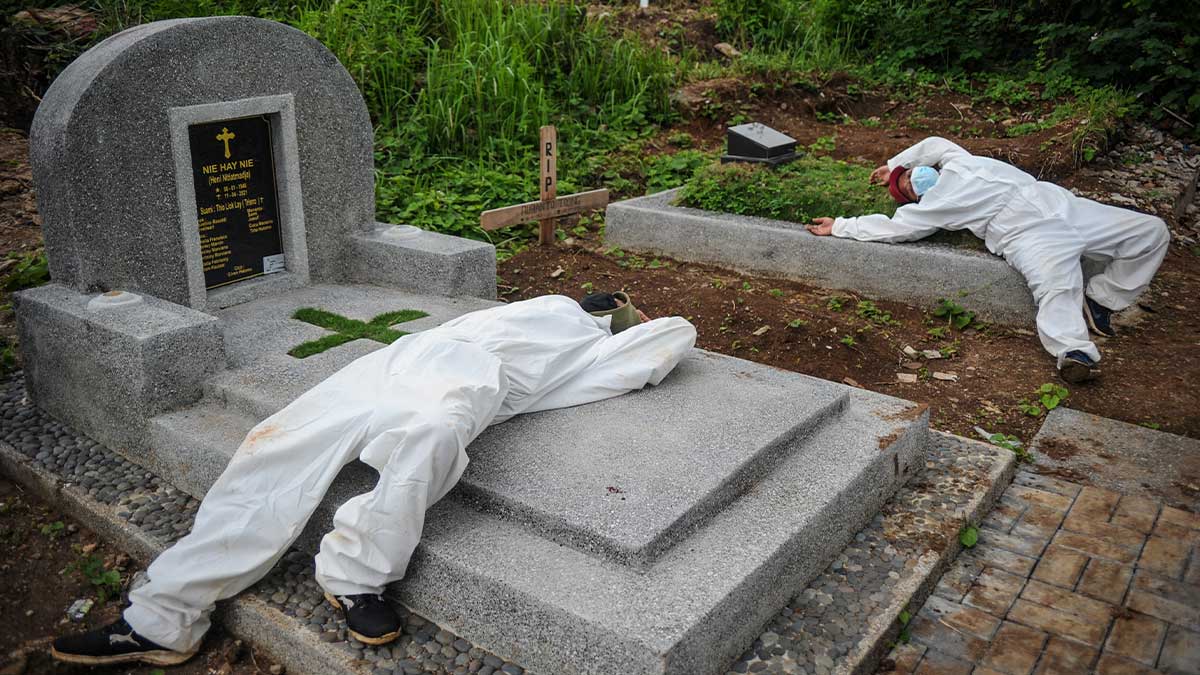While Australians are focused on the mayhem the Delta variant is inflicting on its shores, Delta is actually causing COVID outbreaks all over the world.
Let’s take a look at Delta in a global context, given the World Health Organization’s (WHO) warning that it will quickly become the prevalent strain.
In October 2020, the Delta variation (B.1.617.2) appeared quietly in the Indian state of Maharashtra. It scarcely made a ripple at a time when India was reporting 40,000 to 80,000 cases per day, the majority of which were the Alpha form (B.1.1.7) first discovered in the UK.
That changed in April, when India suffered a major outbreak of infections, with daily cases reaching over 400,000 by mid-May. In India, the Delta variant quickly became the dominant strain.
Delta was identified as a variant of concern by the World Health Organization (WHO) on May 11, making it the fourth such variant.
Delta Variant Spread Quickly Over The World
The Delta variant spread quickly over the world, with at least 98 nations having been reported to far. It’s now the most common strain in places including the United Kingdom, Russia, Indonesia, Vietnam, Australia, and Fiji. It’s also on the rise.
In the two weeks leading up to June 19, Delta accounted for one in every five COVID cases in the United States, compared to only 2.8 percent in the two weeks leading up to May 22.
Meanwhile, according to the most recent Public Health England weekly bulletin, the number of Delta cases has increased by 35,204 from the previous week. The Delta variant was found in over 90% of sequenced instances.
In barely two months, Delta has surpassed Alpha as the most common SARS-CoV-2 strain in the United Kingdom. The rise is concentrated in younger age groups, where a high proportion of the population is unvaccinated.
There Are Around 20 Alterations in Delta Variant
Scientists have discovered more than 20 alterations in the Delta variant, but two of them may be critical in assisting it in transmitting more successfully than previous strains. This is why it was dubbed a “double mutant” in early Indian reports.
The first is the L452R mutation, which is also found in the Epsilon variant, which has been identified as a variant of interest by the World Health Organization. This mutation improves the spike protein’s ability to bind to human cells, making it more infectious.
According to preliminary research, this mutation may let the virus evade neutralising antibodies created by vaccinations and past infection.
The second is a T478K mutation that has never been seen before. This mutation occurs in a region of the SARS-CoV-2 spike protein that interacts with the human ACE2 receptor, allowing the virus to enter lung cells more easily.
The K417N mutation is also found in the Delta Plus variant, which was just discovered. This mutation can also be found in the Beta version, making COVID vaccinations less effective against it.
One edge of the Delta version is that its genome carries a flag that the previously dominant Alpha variant lacks. This allows researchers to track it quickly.
This marker, also known as the “S gene target,” can be detected in the results of COVID-19 PCR tests. As a result, instead of sequencing all of the samples, researchers can utilise positive S-target hits as a proxy to swiftly map the spread of Delta.
Infectiousness, disease severity, and immunity acquired by previous infection and vaccinations are the most feared implications of any variant of concern.
Delta is More Transmissible than Alpha: WHO
Delta is 55 percent more transmissible, according to WHO, than the Alpha variant, which was 50 percent more transmissible than the original Wuhan virus.
Delta’s effective reproduction rate (the number of persons a person infected with the virus will infect on average in the absence of measures like as immunisation) is estimated to be five or higher. When compared to the original strain, this is a factor of two to three.
In Scotland, where the Delta variant exists, one study found that Delta cases resulted in 85 percent more hospital admissions than other variants. However, the majority of these cases were unvaccinated.
According to the same study, two Pfizer doses provided 92 percent protection against symptomatic infection for Alpha and 79 percent protection for Delta. The AstraZeneca vaccination provided significant protection, although at a lower level: 73 percent for Alpha and 60 percent for Delta.
According to a study conducted by Public Health England, a single dosage of either vaccine was only 33% effective against symptomatic sickness, compared to 50% for the Alpha form. As a result, getting a second dose is critical.
Moderna disclosed in a pre-print article that its mRNA vaccine protected against Delta infection, but with a lower antibody response than the original strain. This could have an impact on how long immunity lasts.
The Delta form is more contagious, likely causes more serious sickness, and current vaccinations are ineffective against it.
Because of their poor immunisation rates, WHO warns that low-income countries are the most vulnerable to Delta. In the week ending June 29, new cases in Africa climbed by 33%, with COVID-19 mortality increasing by 42%.
There has never been a time when speeding up vaccination distribution around the world has been more critical than now.
In addition to vaccination, WHO Director-General Tedros Adhanom Gebreyesus has stressed the importance of public health measures like as effective surveillance, isolation, and clinical care. In addition, combating the Delta variety will necessitate the continuing use of masks, physical separation, and keeping indoor locations well ventilated.





















